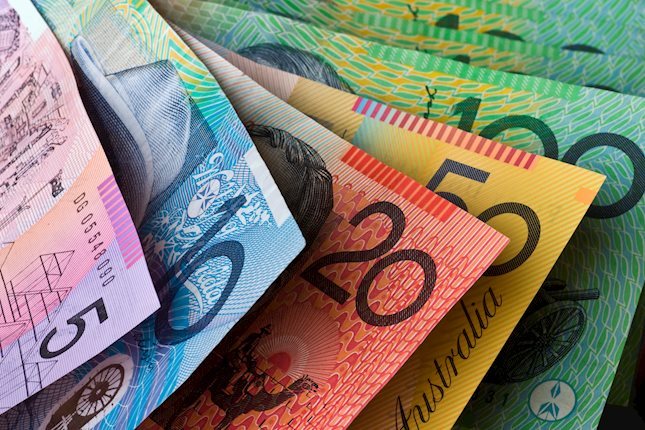The Federal Reserve will announce its decision at 18:00 GMT. Jerome Powell will hold a press conference at 18:30 GMT. Also the central bank will present the Summary of Economic Projections.
Key notes
The Federal Reserve is widely expected to keep interest rates on hold at the 2.25 - 2.5% range. At the last meeting, the Fed took a dovish shift signaling more “patient” ahead. Fed-funds futures show no expectation about a rate hike over the course of the year and some odds of a rate cut on the back of the latest round of US economic data that came in mixed. Manufacturing activity eased, and employment growth pulled back. Also, the global outlook continues to point to a slowdown, and the US-China trade deal is still not there. On the positive side, consumer spending remains firm.
Muted inflation pressures present a strong argument for the Fed to keep its relatively new approach. James Knightley, Senior Economist at ING, sees the Fed sticking to its “patient” approach and warns about some potential announcements regarding the balance sheet with “quantitative tightening” seemingly coming to an end. At ING, they continue to look for one 25 basis point rate hike in the second half of the year, considering a return to growth and easing trade tensions.
What the central bank says about the balance sheet will be a relevant issue. Fed’s portfolio totals more than $4 trillion. The central bank could announce today or soon how it plans to stop the balance sheet reduction program. The Fed will present the statement and also updated forecasts that are expected to be tilted to the downside, considering the economic data released since the December meeting (last report). “We expect the Fed to lower its 'dot' signal to one rate hike in 2019 (down from two). We expect them also to be revised lower for 2020 and 2021 and would not be surprised if the Fed signals 'one and done'. That said, the Fed has begun downplaying the importance of the dots, so we would be careful putting too much weight on them going forward. Our current base case is two rate hikes (in June and December) based on our overall positive economic outlook, but if the Fed continues focusing on inflation expectations, a June hike seems less likely, as market-based inflation expectations are well below the historical average”, said Danske Bank analysts.
Implications for DXY
On March 7, the DXY hit multi-month highs following the European Central Bank meeting, but failed to hold around 97.50 and reversed to the downside. Since then it has fallen constantly and bottomed yesterday at 96.30. The move lower took place amid a decline in US yields, affected by the change in the Fed’s stance and US data.
The US dollar could be hit by a more dovish than expected tone from the Fed and Powell today, and also by a significant change in the “dot plot,” for example, pointing to no rate hikes over the next quarters. On the contrary, if the Fed is seen as not so dovish, for example, looking to one or two rate hikes over the course of the year or mentions that the balance sheet normalization could go on for more time than what is currently expected, the greenback could strengthen.
If the DXY rebounds, the critical level to watch is the 96.60-96.80 resistance zone. A break higher would reinforce the bullish scenario, putting the index back into an ascendant channel. On the contrary, a break under 96.30 would clear the way for a test of 96.00 and would confirm the breakout of the bullish formation, exposing 2019 lows.
About the interest rate decision
With a pre-set regularity, a nation's Central Bank has an economic policy meeting, in which board members took different measures, the most relevant one, being the interest rate that it will charge on loans and advances to commercial banks. In the US, the Board of Governors of the Federal Reserve meets at intervals of five to eight weeks, in which they announce their latest decisions. A rate hike tends to boost the local currency. A rate cut tends to weaken the local currency. If rates remain unchanged (or the decision is largely discounted), attention turns to the tone of the FOMC statement, and whether the tone is hawkish, or dovish over future developments of inflation.
About the FOMC statement
Following the Fed's rate decision, the FOMC releases its statement regarding monetary policy. The statement may influence the volatility of USD and determine a short-term positive or negative trend. A hawkish view is considered as positive, or bullish for the USD, whereas a dovish view is considered as negative, or bearish.
About FOMC economic projections
This report, released by Federal Reserve, includes the FOMC's projection for inflation and economic growth over the next 2 years and, more importantly, a breakdown of individual FOMC member's interest rate forecasts.
Information on these pages contains forward-looking statements that involve risks and uncertainties. Markets and instruments profiled on this page are for informational purposes only and should not in any way come across as a recommendation to buy or sell in these assets. You should do your own thorough research before making any investment decisions. FXStreet does not in any way guarantee that this information is free from mistakes, errors, or material misstatements. It also does not guarantee that this information is of a timely nature. Investing in Open Markets involves a great deal of risk, including the loss of all or a portion of your investment, as well as emotional distress. All risks, losses and costs associated with investing, including total loss of principal, are your responsibility. The views and opinions expressed in this article are those of the authors and do not necessarily reflect the official policy or position of FXStreet nor its advertisers. The author will not be held responsible for information that is found at the end of links posted on this page.
If not otherwise explicitly mentioned in the body of the article, at the time of writing, the author has no position in any stock mentioned in this article and no business relationship with any company mentioned. The author has not received compensation for writing this article, other than from FXStreet.
FXStreet and the author do not provide personalized recommendations. The author makes no representations as to the accuracy, completeness, or suitability of this information. FXStreet and the author will not be liable for any errors, omissions or any losses, injuries or damages arising from this information and its display or use. Errors and omissions excepted.
The author and FXStreet are not registered investment advisors and nothing in this article is intended to be investment advice.
Recommended content
Editors’ Picks

Australian Dollar sees gains on hawkish RBA minutes
The AUD/USD climbed by 0.15% to 0.6520 in Tuesday's trading, driven by several factors. The hawkish Reserve Bank of Australia (RBA) Minutes provided support to the Australian Dollar, as did a weaker US Dollar and hopes for Chinese economic stimulus.

EUR/USD: The recovery needs a stronger catalyst
EUR/USD reversed two daily pullbacks in a row and came under some fresh downside pressure following renewed geopolitical jitters on the Russia-Ukraine front, all prior to key data releases on both sides of the ocean due later in the week.

Gold remains propped up by geopolitics
Gold retreats slightly from the daily high it touched near $2,640 but holds comfortably above $2,600. Escalating geopolitical tensions on latest developments surrounding the Russia-Ukraine conflict and the pullback seen in US yields help XAU/USD hold its ground.

Why is Bitcoin performing better than Ethereum? ETH lags as BTC smashes new all-time high records
Bitcoin (BTC) has outperformed Ethereum (ETH) in the past two years, setting new highs while the top altcoin struggles to catch up with speed. Several experts exclusively revealed to FXStreet that Ethereum needs global recognition, a stronger narrative and increased on-chain activity for the tide to shift in its favor.

How could Trump’s Treasury Secretary selection influence Bitcoin?
Bitcoin remained upbeat above $91,000 on Tuesday, with Trump’s cabinet appointments in focus and after MicroStrategy purchases being more tokens.

Best Forex Brokers with Low Spreads
VERIFIED Low spreads are crucial for reducing trading costs. Explore top Forex brokers offering competitive spreads and high leverage. Compare options for EUR/USD, GBP/USD, USD/JPY, and Gold.